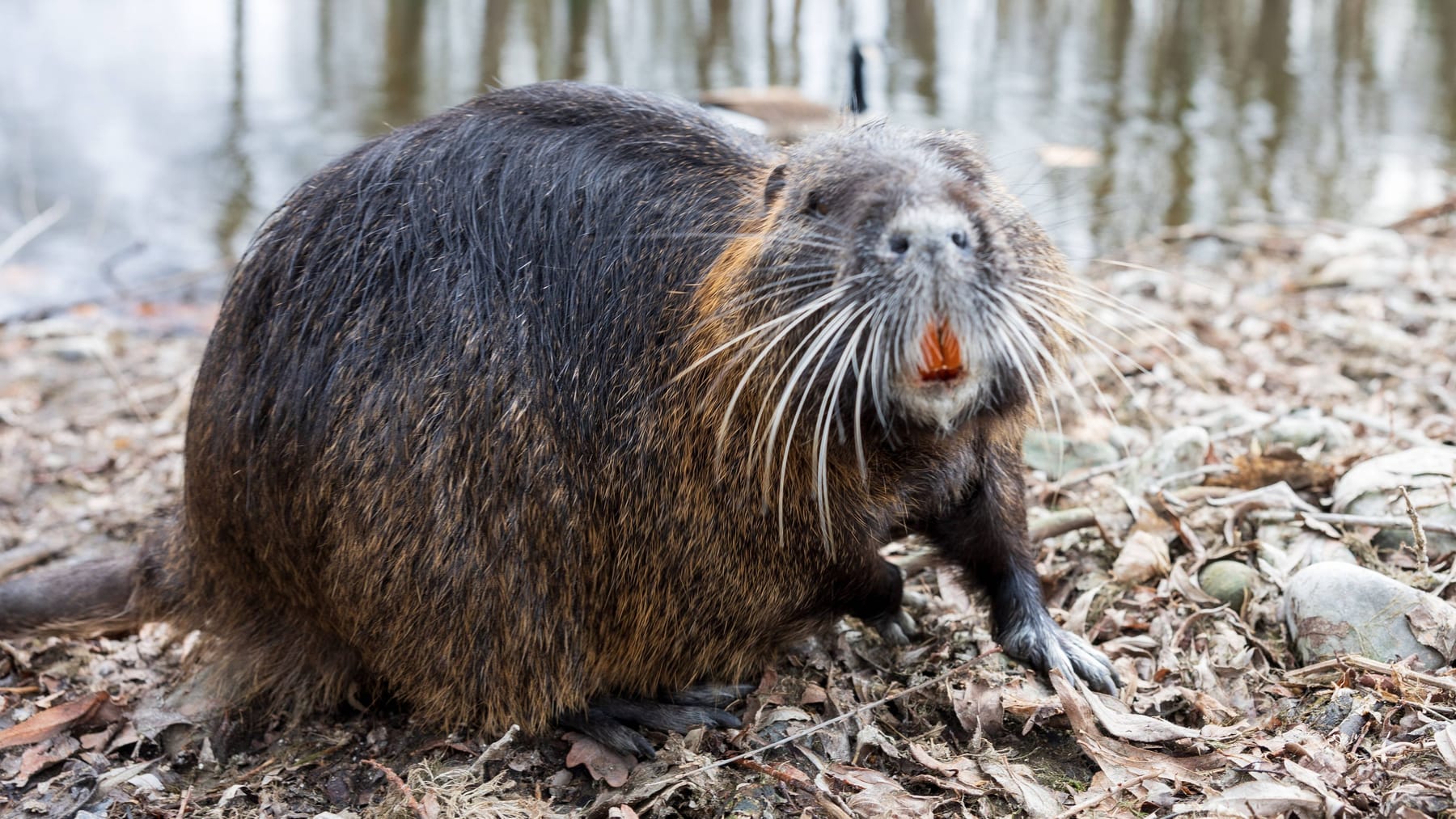Coypu are spreading in Germany. Rodents are also becoming more common in Hamburg and are now becoming a problem in one district in particular.
In Hamburg, the nutria population has increased by 77% since 2015. This is the result of new data from the German Hunting Association (DJV) on nutria. The Bergedorf district is particularly affected. In a question from the FDP parliamentary group, discussed in a meeting of the environment commission, there is talk of “uncontrolled proliferation” and a real “plague”.
After the spread of nutria was initially observed mainly on the Elbe and side arms in recent years, the spread of nutria is now particularly rapid in the areas of Neuallermöhe, on the Brookdeich and on the Obere Bille, he says.
Nutria has been found in Hamburg since the 1990s
“It is an invasive species that poses a serious threat to native flora and fauna and can become a huge threat to riverbanks, edges and riverbanks. The animals can also be quite aggressive and pose a threat to children, dogs and cats”. warns the FDP against rodents, which are native to South America and often confused with the native beaver or muskrat.
“The coypu that live here are the descendants of animals that escaped fur farms,” says an environmental agency information page. They have therefore been present in Hamburg since the mid-1990s. The problem: “Coypu multiply exponentially with about three litters per pair per year,” explains the FDP. That means eight to ten puppies per litter.
Environment Agency sees no ‘nutria plague’
However, Hamburg’s environment, climate, energy and agriculture authority (Bukea) sees no reason to act. “We cannot speak of a ‘nutria plague’ and of damages that seriously endanger public safety”, writes the environmental authority on its information page. You are also warned not to feed the animals.
Bukea also rates the damage to levees and nature caused by coypu, which like to erode levee systems and bank areas with their buildings, as rather “minor”. According to the authorities, the fortification of the dikes – apart from the Schlesengraben dikes – is above the nutria habitat. Therefore, no reason is currently seen to step up the fight, although the measures taken so far, according to the FDP, are by no means sufficient.
600 coypu killed in Hamburg in 2020
Live traps have been set up in Hamburg since 2019 to curb the spread of rodents. In addition, two moss hunters are in action. According to Bukea, a total of 217 animals were killed in this way in 2019 and a year later, according to information, there were already 600 animals.
In the future, the agency plans to delegate management of widespread and invasive alien species, including coypu, to districts. The relevant ordinances on protection zones must also be reviewed and examined “under what conditions the control of invasive alien species can be made possible”.
Hunters should and can take care of coypu in Bergedorf
Up to now, in contrast to most federal states, coypu in Hamburg have not been subject to the hunting law, but can be hunted by “authorized persons” within the scope of the hunting protection. A report is also in the works. “For this we need specific reports on the damage caused by nutrias in Bergedorf. And unfortunately there has been nothing so far,” said Nina Klar of the environmental authority, second “Hamburger Abendblatt” in the committee.
According to “Abendblatt”, another problem when hunting rodents is the tail bonus that hunters receive for each killed nutria. This is currently nine euros – too low, finds hunter Gerald Eggers. The money is just enough for the journey from the Vier- und Marschlanden to Bergedorf and the associated expenses. “Because we often only have to go for a single captured animal,” said the hunter, according to “Abendblatt”.
The end of the problem therefore does not seem foreseeable at the moment. The nutria topic should therefore be put back on the agenda by March 2023 at the latest.


